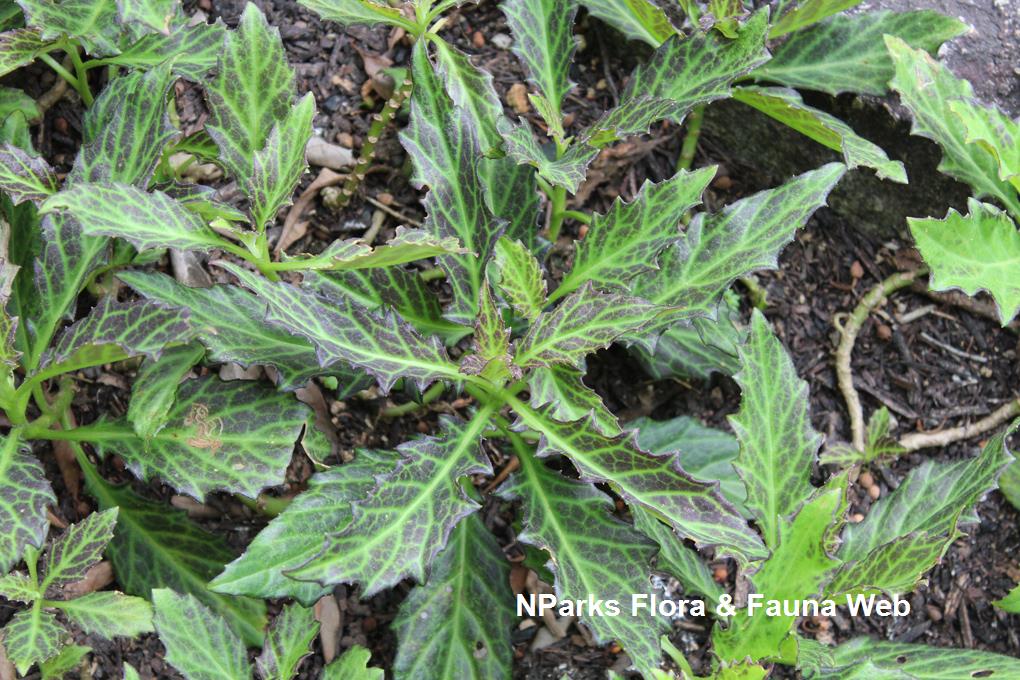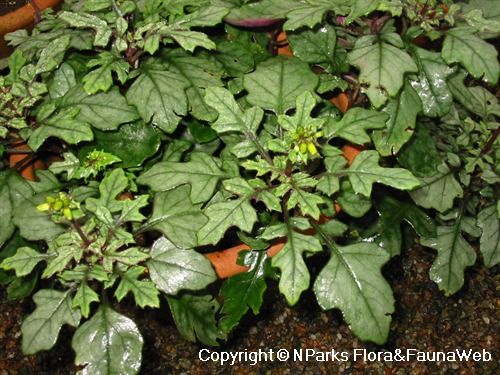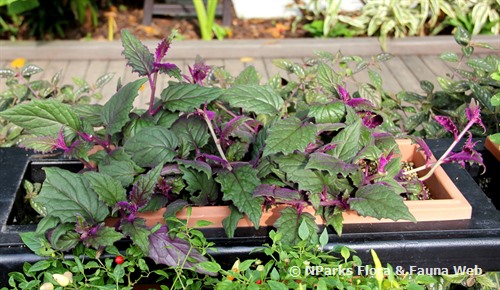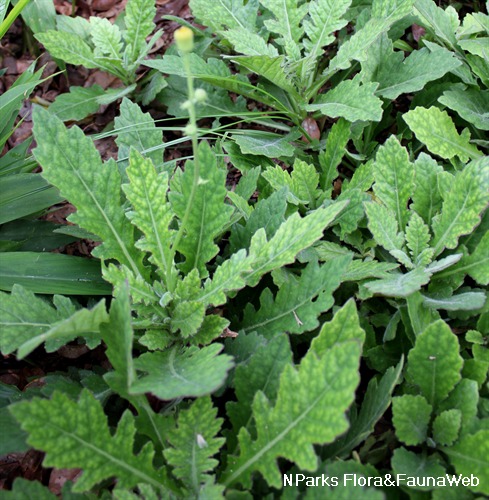
Back
Gynura japonica (Thunb.) Juel
| Family Name: | Asteraceae (Compositae) |
| Synonyms: | Gynura flava |
| Common Name: | 黃花三七草, 菊三七 |
Name
Classifications and Characteristics
| Plant Division | Angiosperms (Flowering Seed Plants) (Dicotyledon) |
|---|---|
| Plant Growth Form | Herbaceous Plant |
| Lifespan (in Singapore) | Perennial |
| Mode of Nutrition | Autotrophic |
Biogeography
| Native Distribution | Nepal, Thailand and China |
|---|---|
| Native Habitat | Terrestrial |
| Preferred Climate Zone | Tropical, Sub-Tropical / Monsoonal |
Description and Ethnobotany
| Roots | Thick, tuberiform(a swollen rounded underground rhizome) 3-4cm in diameter, with numerous fibrous roots, . |
|---|---|
| Ethnobotanical Uses | Medicinal: The rhizomes of Gynura japonica have been used in traditional Chinese medicine since the Ming Dynasty to treat trauma injuries topically. It was also used internally to promote blood circulation, remove and dissipate blood stasis. |
Landscaping Features
| Desirable Plant Features | Ornamental Foliage |
|---|---|
| Landscape Uses | General, Flowerbed / Border, Container Planting |
| Thematic Landscaping | Economic Garden |
Plant Care and Propagation
| Light Preference | Semi-Shade |
|---|---|
| Water Preference | Moderate Water |
| Plant Growth Rate | Fast |
| Rootzone Tolerance | Moist Soils, Well-Drained Soils |
Foliar
| Foliage Retention | Evergreen |
|---|---|
| Mature Foliage Colour(s) | Green |
| Mature Foliage Texture(s) | Hairy / Hirsute |
| Foliar Type | Simple / Unifoliate |
| Foliar Arrangement Along Stem | Basal |
| Foliar Attachment to Stem | Petiolate |
| Foliar Margin | Lyrate |
Floral (Angiosperm)
| Flower Colour(s) | Yellow / Golden |
|---|---|
| Flower Grouping | Cluster / Inflorescence |
| Flower Location | Terminal |
| Inflorescence Type | Corymb |
Image Repository
Others
| Master ID | 31476 |
|---|---|
| Species ID | 5873 |
| Flora Disclaimer | The information in this website has been compiled from reliable sources, such as reference works on medicinal plants. It is not a substitute for medical advice or treatment and NParks does not purport to provide any medical advice. Readers should always consult his/her physician before using or consuming a plant for medicinal purposes. |

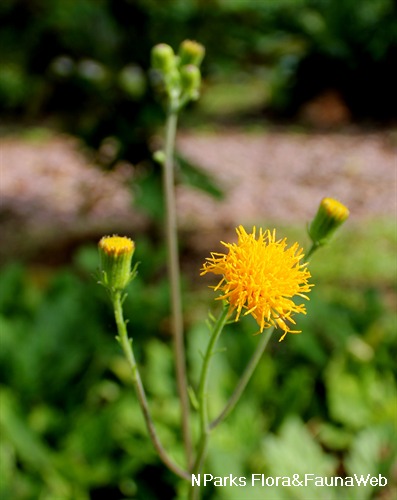
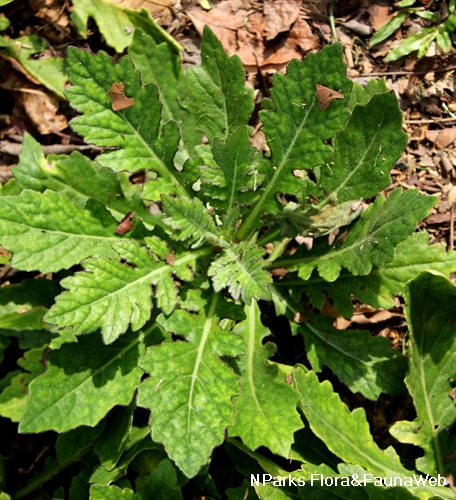

_vicky_lim_yen_ngoh-(1).jpg)
